A Private Tour today in North Norfolk. It was another hot and sunny day, although a light sea breeze kept something of a lid on temperatures on the coast.
On our way out this morning, we swung round via the church where the Peregrine has been roosting for the last couple of months. It is not always there, but as we drove up we could see it perched on a protruding stone high on the tower. We got out and got the scope on it, getting a fantastic close-up look at it in the process.
The Peregrine was already looking a bit restless today, facing out, alert, with its wings held half open. Thankfully we had all had a really good look before it stretched its wings out and took off. We watched as it flew off east over the town. Presumably it had enjoyed a lie in and was now off to get its breakfast this morning!

Our destination for the morning was Holkham. It was already starting to get quite warm as we parked at the top of Lady Anne’s Drive and set off west along the past on the inland side of the pines. It was rather quiet in the trees today. A Chiffchaff and a Blackcap were singing, and we could hear tits and a Treecreeper calling from deep in the pines.
The butterflies were out in force and enjoying the warm weather. The highlight was a Silver-washed Fritillary which flew in and landed on the brambles to feed. This species has been expanding rapidly and spreading out across Norfolk, but is still always a good one to see.
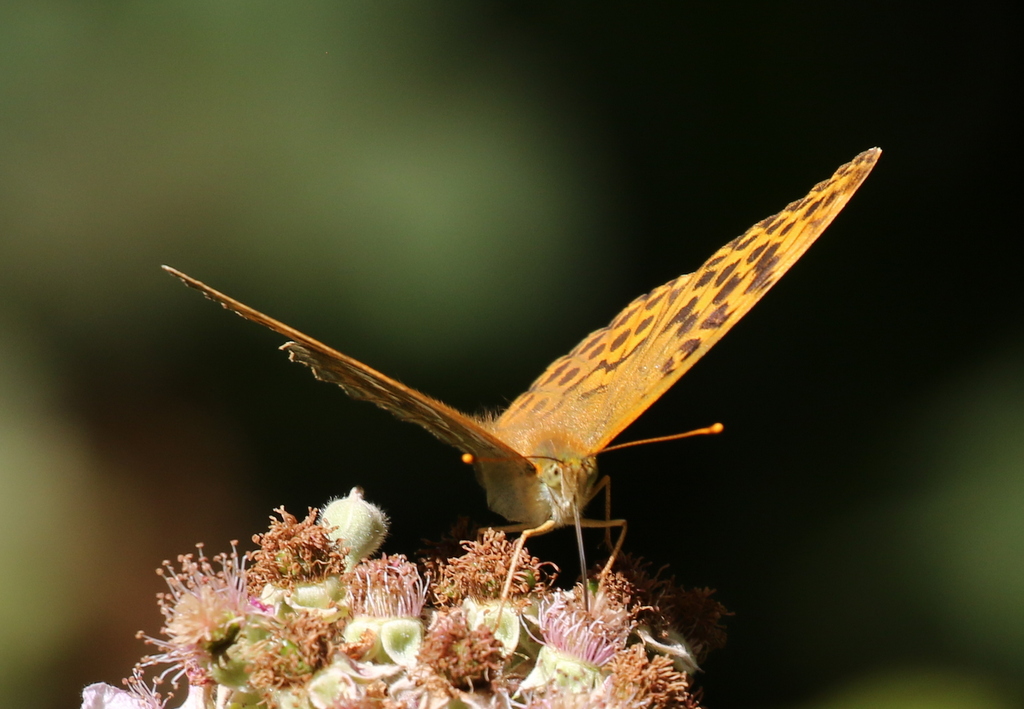
There were also lots of Gatekeeper and Meadow Brown, a few Ringlet and a couple of Speckled Wood along the track here. A second generation Wall Brown landed on the path, but refused to open its wings.
Salts Hole was pretty empty save for a handful of Mallard. A Common Darter dragonfly hovered over the pool and a Southern Hawker was patrolling round the edge of the reeds. We stopped to listen to a Reed Warbler singing it rhythmic song, and it treated us to some masterful mimicry, imitating Blue Tit, Wren and Swallow and weaving them into its song while we stood nearby.
We stopped briefly up on the boardwalk to Washington Hide, to scan the grazing marshes. There was not much out here today, unusually not even any Marsh Harriers, so we continued on. Just beyond Washington Hide, we heard Long-tailed Tits and Coal Tits calling in the trees, we had finally found one of the tit flocks. We thought they might be coming down for a drink, but despite looking like they might be coming out onto the edge of the trees ahead of us, they disappeared back deeper in.
The hemp agrimony is in flower along the path now and is great for butterflies. Scanning the flower heads as we walked along, we added quite a few to the day’s list – Large Skipper, Peacock, Painted Lady and a smart Brown Argus which posed nicely for us. There were several smaller skippers and one did eventually stop long enough for us to see the underside of its antennae – it was a Small Skipper.
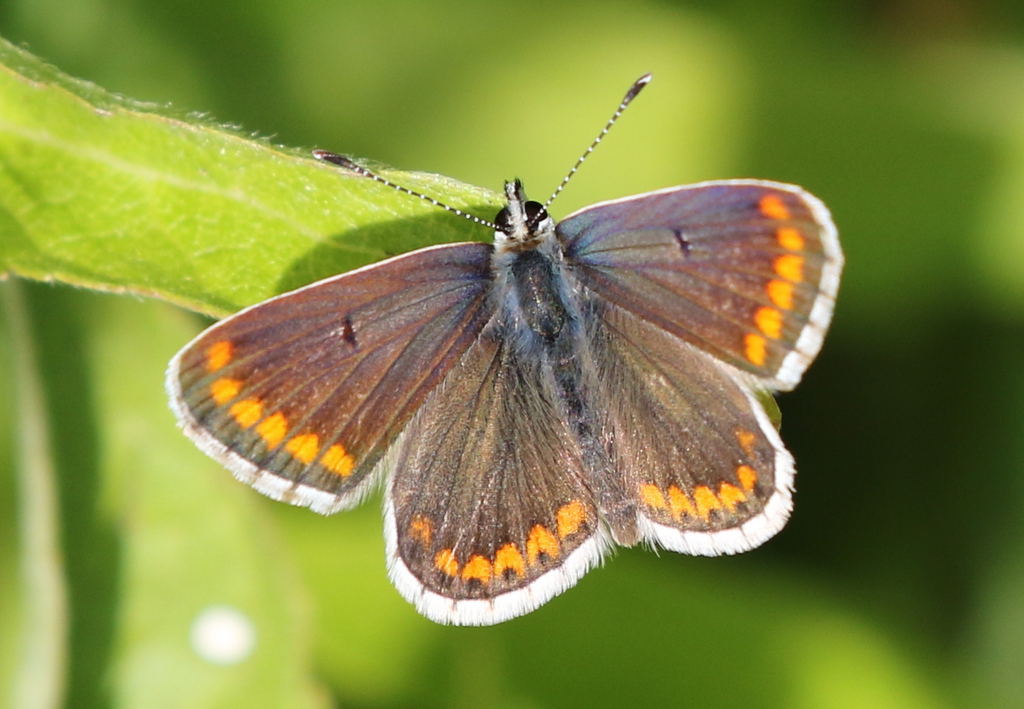
As we approached Joe Jordan Hide through the pines, we could see lots of white birds still out on the pool below. When we got up into the hide, we could see they were mostly Spoonbills. Birds were coming and going all the time, but there were at least 15 juveniles, ‘teaspoons’ with only partly grown bills much shorter than the adults, recently fledged from the trees nearby.
We watched as a couple of the juvenile Spoonbills set off after one of the adults, which will have been one of their parents. They walked behind it, flapping their wings and bobbing their heads up and down. They wouldn’t give up either, until they had been fed, pursuing it right across the pool – little beggars! They are starting to disperse along the coast now and numbers will fall here in the next few weeks.
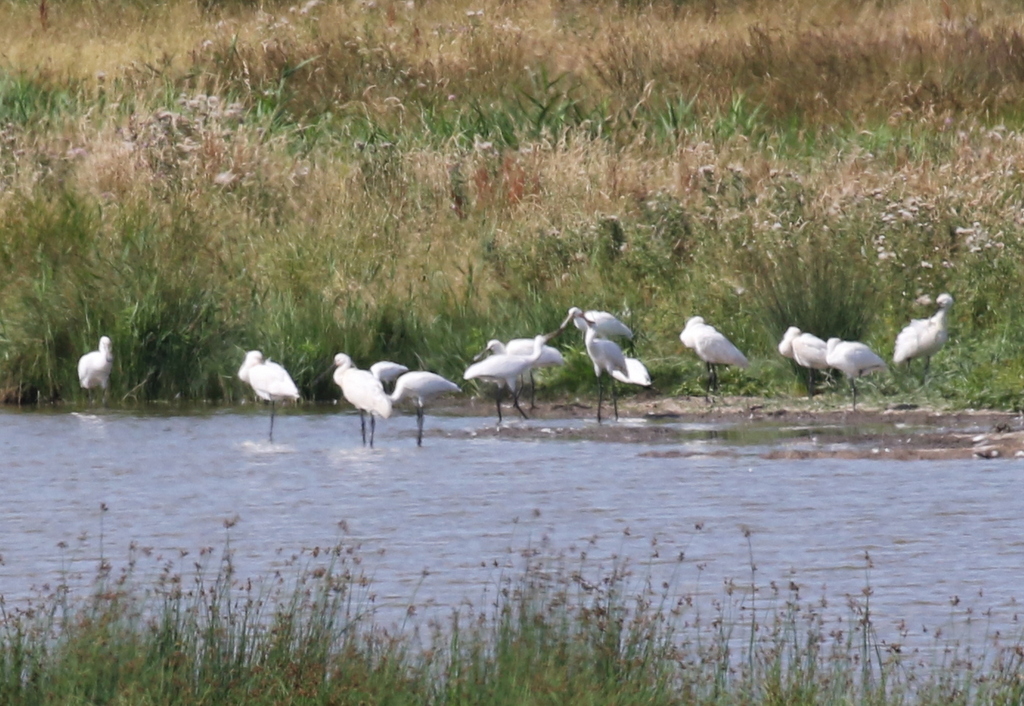
There were a few more Marsh Harriers from Joe Jordan Hide, juveniles flying around over the grazing marsh, practising their flying skills. A couple of Common Buzzards started to spiral up too, on the increasingly hot air.
Apparently, there had been a Great White Egret on the bank of one of the ditches just before we arrived, but it had flown back into the trees. Eventually one flew out again, and did a nice fly past, before dropping down into a ditch out of view. Then a second Great White Egret flew back out of the trees and landed out on the grazing marshes beyond.
It was time to start walking back. There were still lots of butterflies in the flowers beside the path and one larger, dull orange one stood out. It was a Dark Green Fritillary. They are fairly common in the dunes here at this time of year and one or two sometimes wander over to this side of the pines to feed. A two-fritillary morning!
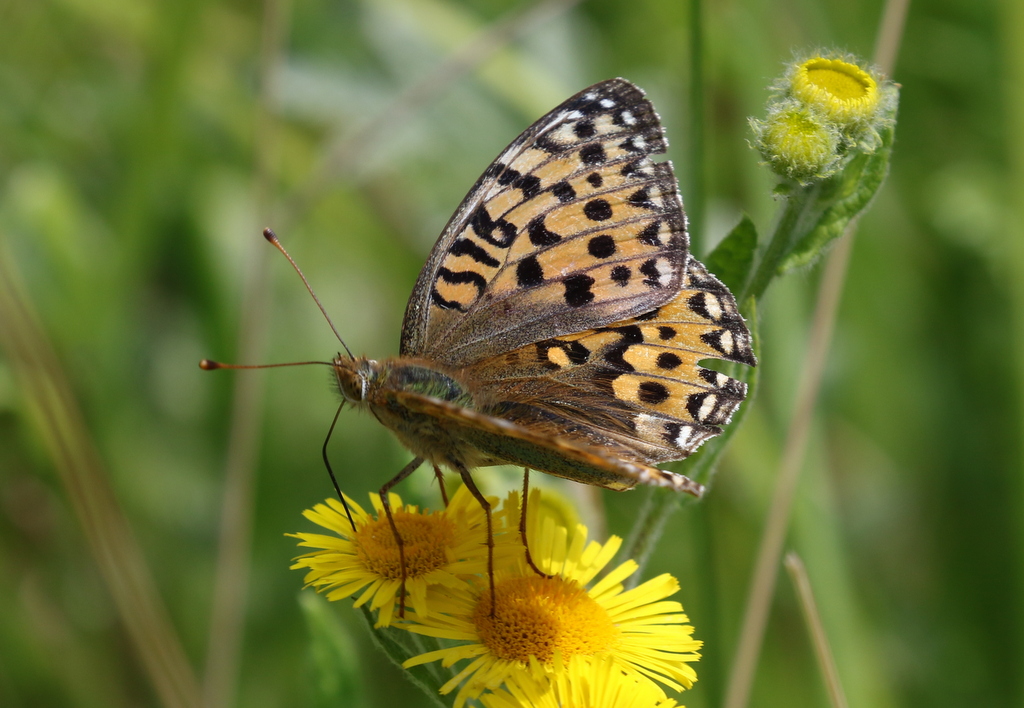
When we got back to Meals House, we finally found a tit flock out in the open on the edge of the trees, Long-tailed Tits, Blue Tits and Coal Tits. Three Treecreepers were chasing each other in and out of the trees and one kept landing back on the trunk of the same sycamore. A Blackcap flew up out of the vegetation the other side of the path and we could hear it calling behind us. There were also a couple of Chiffchaff and a Chaffinch with the flock too.
The walk back to the car from there was fairly quiet. A Goldcrest was singing in the pines just past Salts Hole and several House Martins were hawking for insects high over the treetops. As we drove back up Lady Anne’s Drive, a Red Kite was circling over the south side of the grazing marsh and drifted over the road behind the Victoria pub.
Our destination for the afternoon was Titchwell, but when we got there we stopped first for an early lunch in the picnic area. After lunch, we headed out to explore the reserve. As we came out of the trees, a juvenile Marsh Harrier was circling over the Thornham grazing marsh. It gradually drifted almost overhead, giving us a great view, all dark but for a paler head.
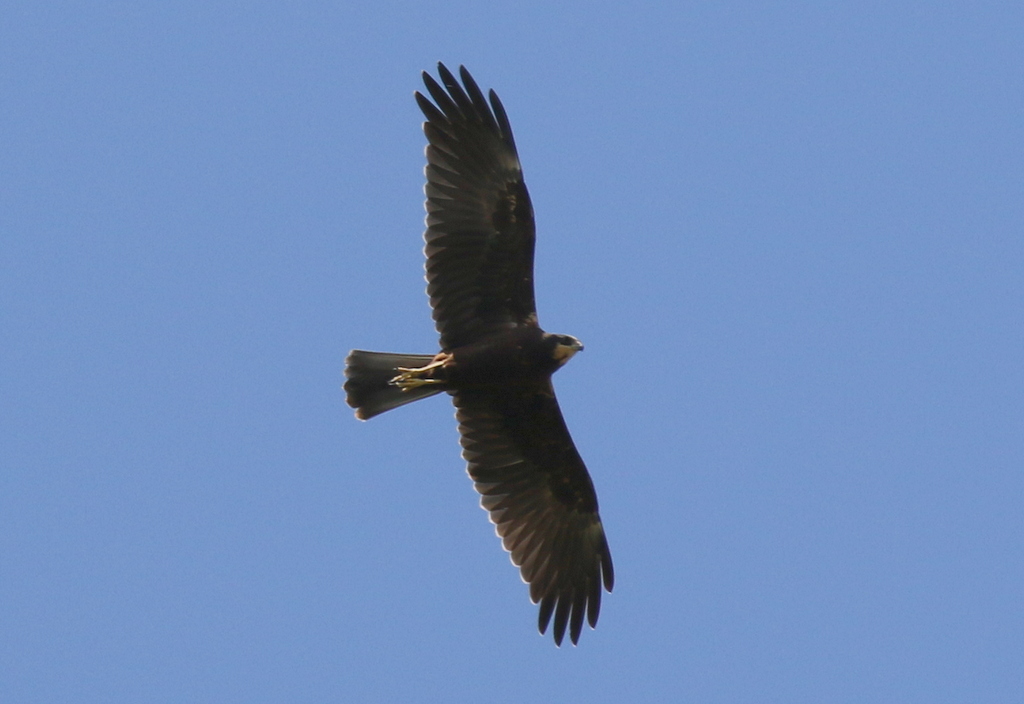
The reedbed pool held a nice selection of dabbling ducks, but they are all in their rather dull eclipse plumage at this time of year. Two female Red-crested Pochards floated out from the edge of the reeds and a couple of Little Grebes were diving out towards the back.
A couple of Reed Warblers darted in and out of the reeds as we passed. As we approached Island Hide, we could hear Bearded Tits calling and caught a glimpse of one or two as they zoomed across the tops of the reeds.
The Freshmarsh is chock full of birds at the moment, but the first thing we noticed were the Spoonbills. These are birds which have already dispersed from the breeding colony at Holkham. There were several around the small island in the back corner, but a family groups of three, an adult and two juveniles, had landed out in the middle. Just as we had seen at Holkham, the juveniles were pursuing the adult, begging for food. The adult eventually took off and the last we saw of them, it was still being pursued out over the bank and across the saltmarsh
There were lots of waders on the Freshmarsh again today – birds on coming back after the breeding season already, gathering to moult. There are hundreds of Black-tailed Godwits returning from Iceland, and hundred of Avocets gathering here from around the coast. A bewildering variety of Ruff back from Scandinavia, mostly scruffy males in various stages of moult. Three Spotted Redshanks were asleep in amongst them, their black breeding plumage already mostly shed, with just a scattering of black feathers remaining in their increasing pale white underparts.
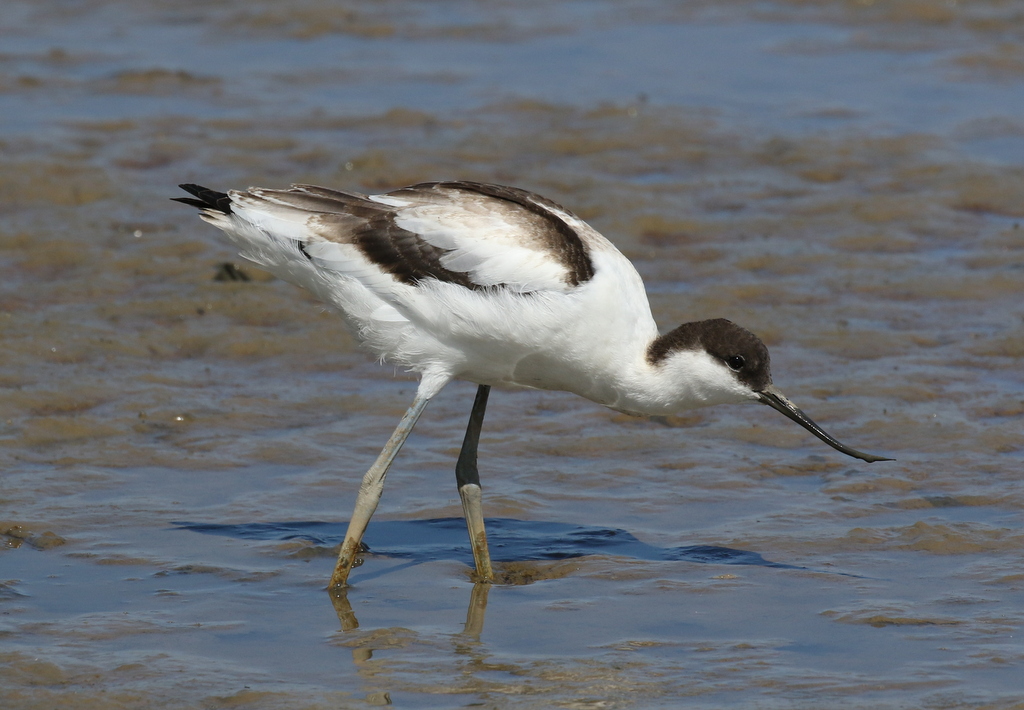
In amongst the larger waders, there were lots of smaller ones, barely up to the knees of the godwits. There were several small flocks of Dunlin, still sporting their summer black belly patches. Three Curlew Sandpipers with them, on their way south from central Siberia, adults with their rusty underparts now liberally peppered with pale winter feathers.
A Little Stint appeared with them. If the Dunlin were already looking small, the Little Stint was smaller still. A summer adult, rusty coloured with a much shorter bill than the Dunlin. There were several smart summer plumaged Knot too, still bright orange below.
When one of the young Marsh Harriers drifted out over the Freshmarsh, pandemonium ensued. Everything took off and it was really impressive to see all the waders in the air together – you really could appreciate at that point just what an enormous number of birds there was out there.
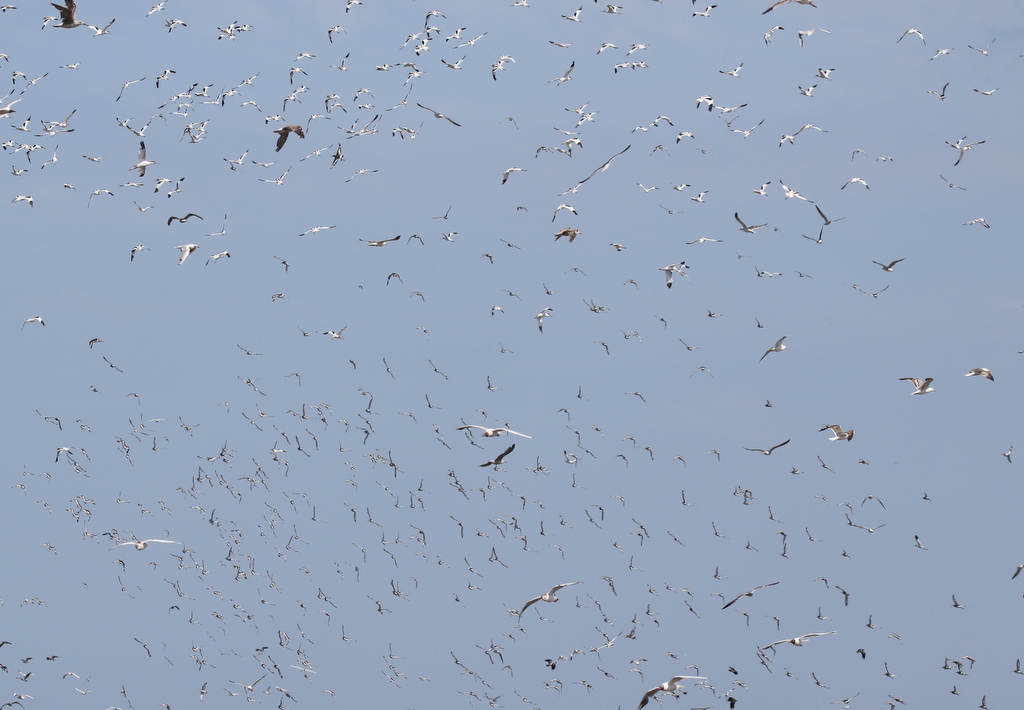
The gulls have rather taken over the Freshmarsh this summer, mostly Black-headed Gulls but also over 50 pairs of Mediterranean Gull have bred too. A smaller gull was swimming out on the water – a Little Gull. We watched as it paddled round in circles, picking at insects on the water’s surface. We could see just how small it was relative to a juvenile Black-headed Gull nearby, which itself was not yet even fully grown.
Pink-footed Geese are mainly a winter visitor here, and should be in Iceland now, but two injured birds have spent the summer here. They were unable to fly north in the spring, presumably winged by wildfowlers shooting out on the marsh opposite – we could see their mangled wings hanging down. They were right below the windows of Island Hide today, giving us a point blank view of their delicate pink-ringed black bills.
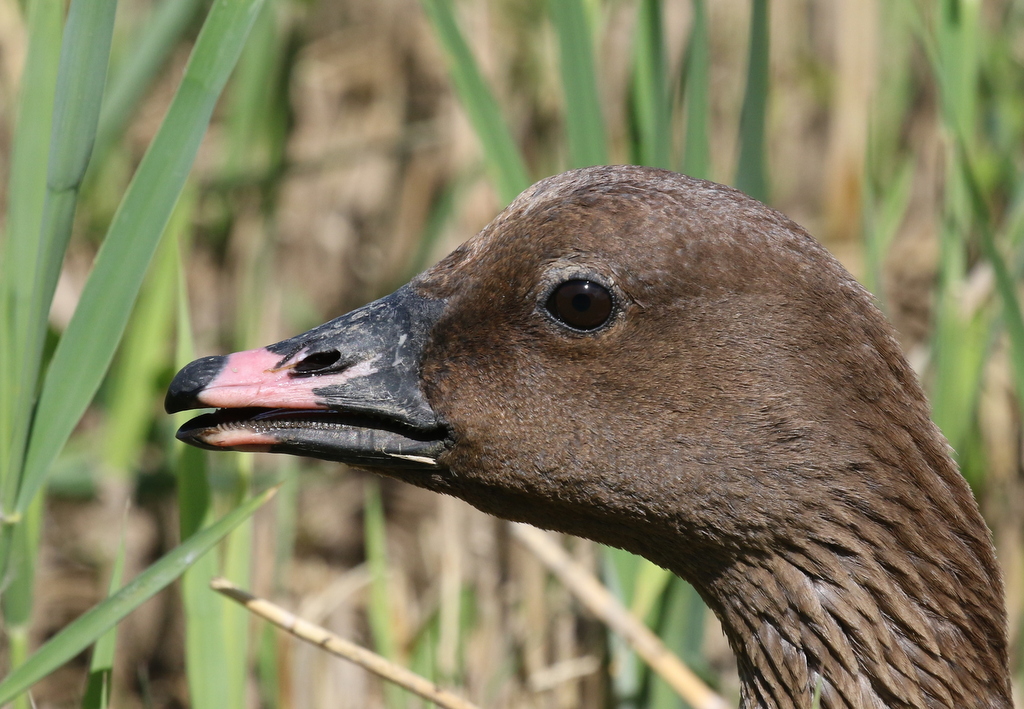
The Bearded Tits had been ‘pinging’ regularly from the reeds and we had managed to see two juveniles feeding on the mud on the edge of the reeds opposite the hide at one point. Then we heard Bearded Tits calling right in front of the hide and two juveniles appeared in the reeds. One clambered up through the vegetation, and we had a great look at it – rich tawny brown, with black lores.
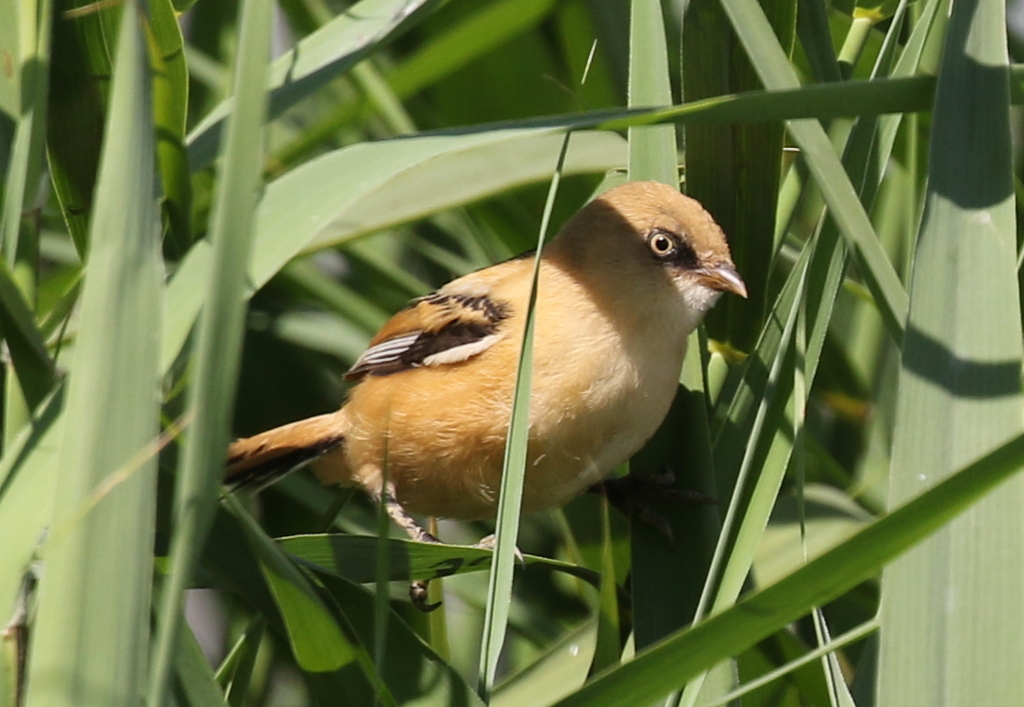
Heading back out along the main path, we stopped to look at two Little Ringed Plovers on one of the islands just below. We could just make out their golden yellow eye rings.
There is not much to see on the Volunteer Marsh at the moment, but there have been a couple of Lapwings feeding along the edges of the muddy channel just below the path in recent weeks. It is a great opportunity to stop and admire their beautiful iridescent plumage, green with patches of purple and bronze as it catches the sun. Even though they are moulting, they are still stunning birds!
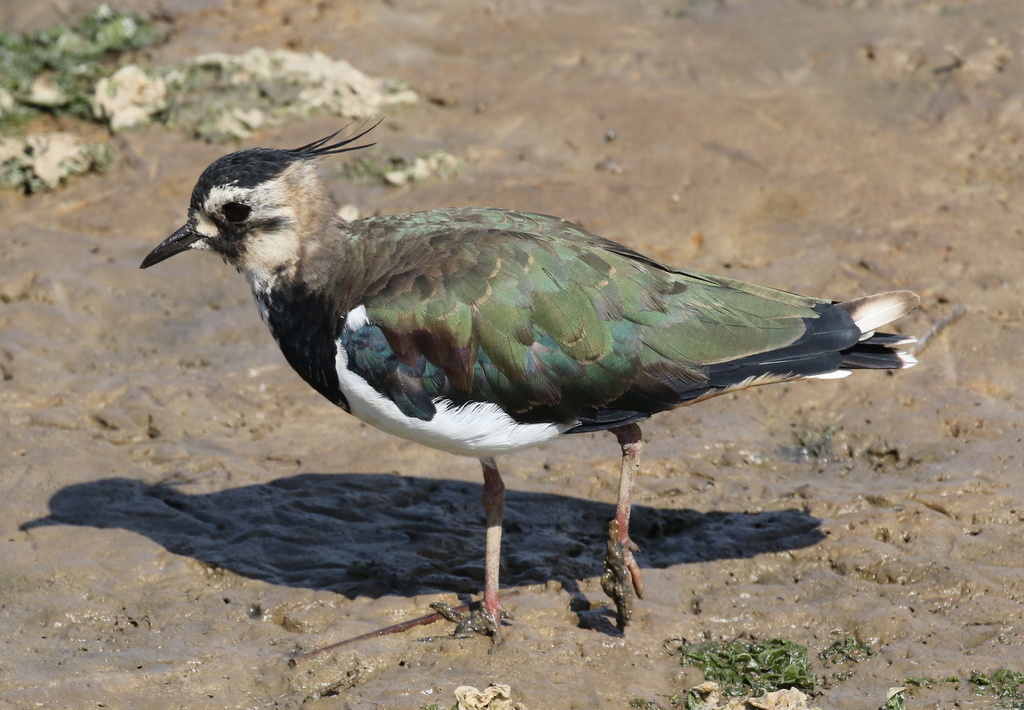
The Tidal Pools are not tidal any more, after a winter storm filled in the channel which filled and drained them. They have been full of sea water, but with all the warm weather it is gradually evaporating creating a haven for waders, with lots of food in the emerging mud and shallow pools. There was quite a bit of heat haze now, in the late afternoon, but we could see more Redshank and Dunlin, plus several Turnstones and a couple of Ringed Plovers.
The Lesser Yellowlegs which has been around the reserve the last couple of weeks has also taken to feeding on here at the moment. It had gone to sleep when we arrived, sat down in the saltmarsh, and we couldn’t see any more than a pale dot!
We thought we could try again later, and continued on to the beach. A few Sandwich Terns were flying back and forth offshore, but otherwise it was fairly quiet today. There was nothing out on the sand – the tide was just coming in, the mussel beds were covered, and there were quite a few holidaymakers out on the beach today.
When we got back to the non-tidal Tidal Pools, the Lesser Yellowlegs was now awake. It was standing up preening, and despite the heat haze, we could see its yellow legs. This is the first Lesser Yellowlegs ever to grace the reserve here, a rare visitor from the Americas, so a nice one to see.
A short diversion saw us call in at Parrinder Hide on the way back. From here, we had a better side-on view of the massed ranks of roosting godwits and we found a couple of Bar-tailed Godwits in with the more numerous Black-tailed Godwits. We could see the rusty orange of their underparts continuing down under the tail. A Common Snipe dropped in and started feeding along the edge of the reeds to the left of the hide, by the fenced-off island. A Common Sandpiper appeared on the grassy island in front of the hide, amongst the gulls, rounding out an excellent selection of waders here today.
We enjoyed better views of the Mediterranean Gulls from here, the adults now starting to lose their black hoods, and their smart grey-brown, scallop-backed juveniles. There were two more ducks for the day’s list too – a couple of Teal, and a single Wigeon – none of which are looking particularly smart now, as they moult.

It had been a great day, and we had seen lots of birds despite the unusually hot weather. We headed for home well-satisfied.
















